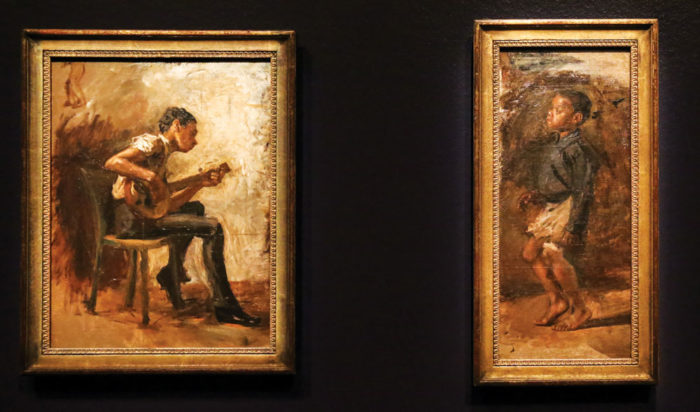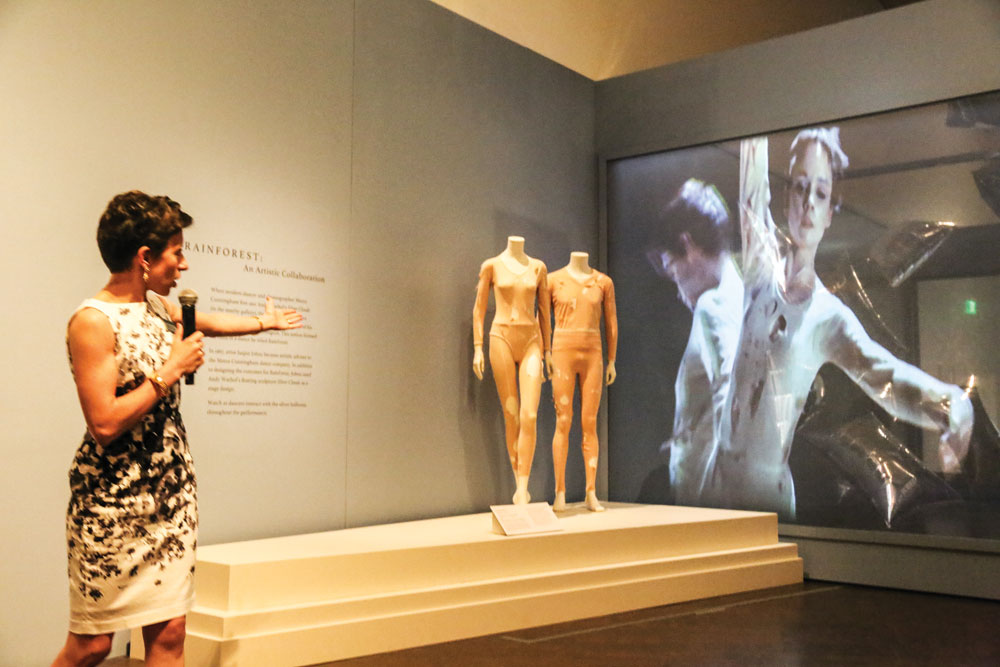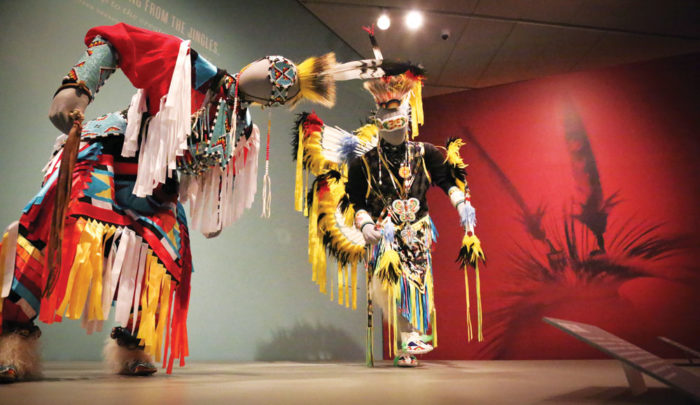
The Jolly Flatboatmen by George Caleb Bingham captures a spontaneous outburst of dance. (1846)
Dancing—whether on a stage or a spontaneous gesture of joy in the moment, and however simple or elaborate—is ephemeral. It comes to an end. Rhythm & Roots, Dance in American Art at the Denver Art Museum (DAM) celebrates how artists since the early 1800s have preserved our country’s dance traditions.
Dance DAM from Anne Hebert on Vimeo.

Study for “Negro Boy Dancing”: The Boy by Thomas Eakins. (1877)
African Americans and immigrants brought dance from their cultures that merged in the U.S. melting pot to form distinctly American dances. Think percussive stomps, Irish jigs and Italian tarantellas sharing the same sidewalks.

Merce Cunningham Dance performance with Andy Warhol’s Silver Clouds.
The exhibit guides visitors through the many eras of dance in the U.S.:
“Swing dance and syncopated jazz rhythms grew out of the American nightclub scene between the 1920s and 1940s.” The Harlem Renaissance in the 1920s and 30s depicted the jazz age as “a dignified and modern African American Culture—a counterpoint to the derogatory stereotypes of the time.”

The Egyptian Dancers by Anne Rice captures the production of Cleopatra. (1910)
The exhibit moves to stage performances and celebrity dancers, from ballet to Spanish dancing—and collaborations between dancers and artists. From a collaboration between dancer Merce Cunningham and artist Jasper Johns, visitors can view a Cunningham performance with an Andy Warhol floating sculpture, Silver Clouds, as the stage design. The room full of the helium-filled silver balloons visible behind the screen (above) is open for visitors to dance along gently.
A separate exhibit, Why We Dance, American Indian Art in Motion, celebrates the many ways dance is significant in Native American culture: ceremonial, religious and social purposes as well as for competition and performance.



0 Comments